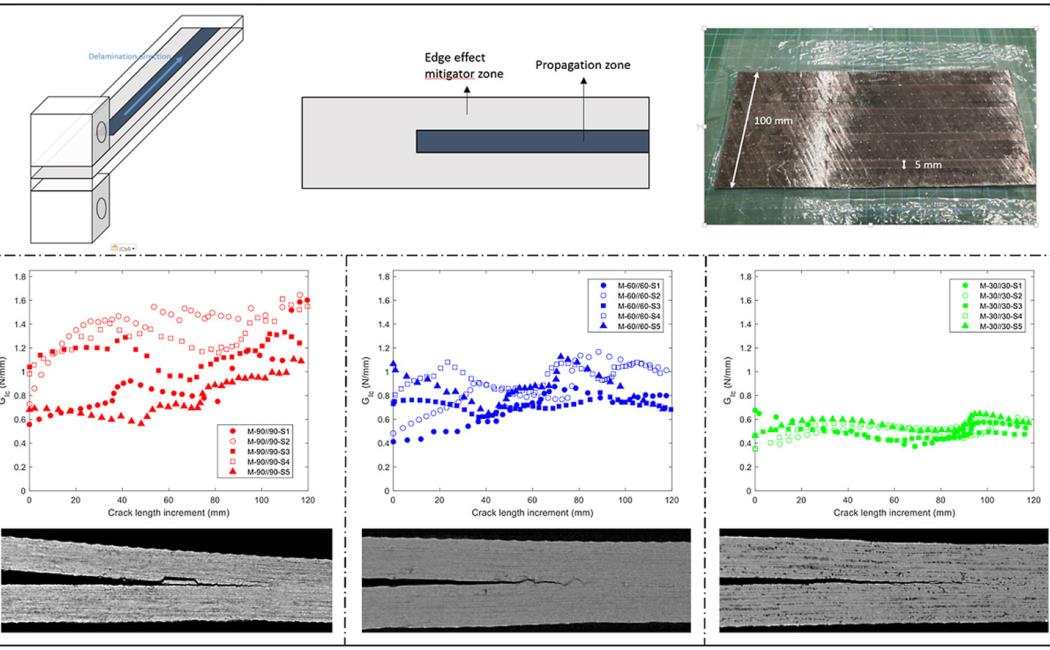


21 August, 2022
Decomposing the coupling damage in mode I multidirectional delamination
Ping Hu, Ran Tao, Xiaole Li, Gilles Lubineau
Composites Science and Technology , Volume 229, October 2022, 109684
The mode I delamination properties between carbon fiber reinforced polymer (CFRP) plies are difficult to measure because the coupling between the intralaminar and interlaminar damage makes delamination properties sensitive to the orientation of surrounding plies. In this study, we use an edge effect mitigator to better isolate the role of the coupling effect that mainly originates from interactions among transverse cracking, local delamination, and fiber bridging. Three samples (i.e., 90//90, 60//60, and 30//30) with and without the edge effect mitigator are evaluated by utilizing the double cantilever beam (DCB) test in the mode I fracture. A baseline unidirectional (UD) DCB test is performed for comparison. The experimental results reveal that for all orientations, the edge effect mitigator confines the delamination crack at the designed interface by limiting the formation of a large fiber bridging zone, thus allowing a more objective evaluation of the delamination properties. However, local crack branching or migration is observed in addition to the primary crack, which is responsible for the fiber orientation-dependent extra dissipation. According to the X-ray scan images obtained in the crack tip, a higher mismatch angle between the fiber orientation and the delamination direction is responsible for the stronger local coupling. The samples without a mitigator illustrate the effect of a fully developed fiber bridging on the apparent toughness in the mode I fracture behavior. The edge effect mitigator demonstrates its potential in a more precise identification of interfacial properties.